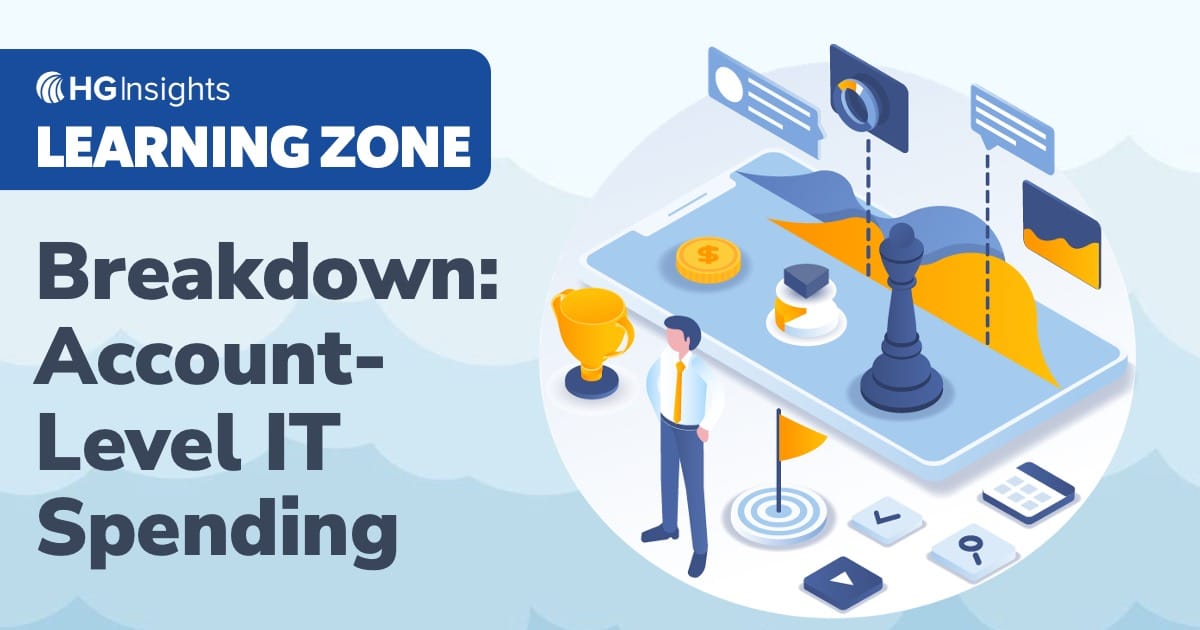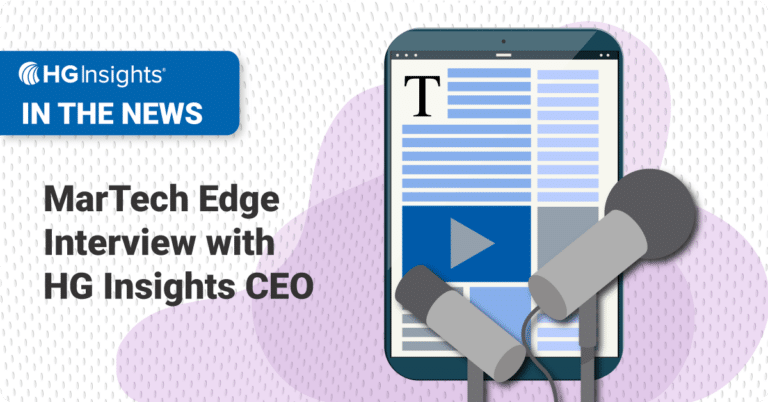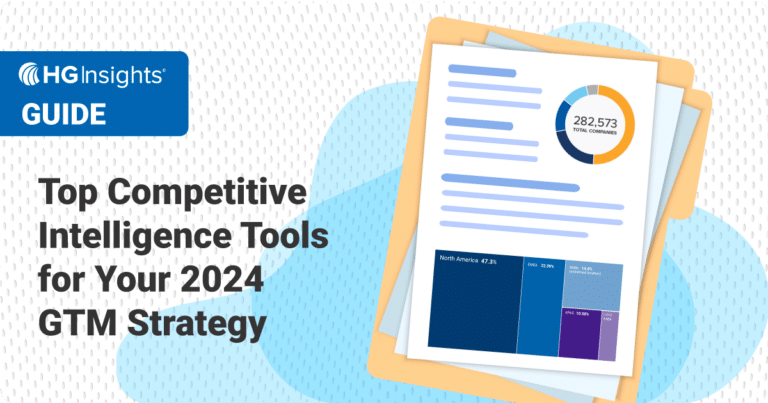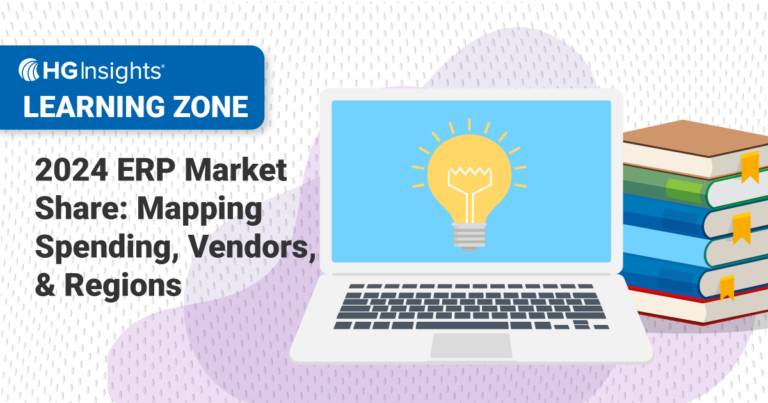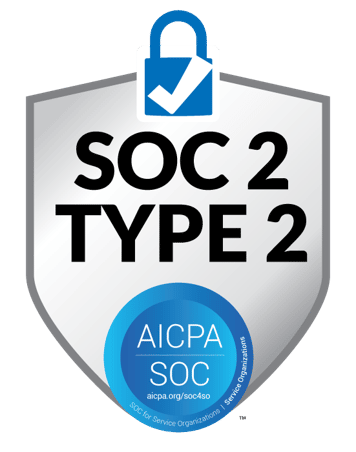Technology investment intelligence is one of the most underutilized ways to identify and understand customers. For example:
- What technologies has a company bought?
- How much are they spending on it?
- Which partners do they work with?
Having this intel, with a high degree of precision, allows vendors to perfect their Go-To-Market strategy.
How much a company is likely to spend on IT and underlying categories is a particularly valuable source of intelligence. This quantity, known as IT spend, has widespread applications for planning, optimizing, and perfecting your Go-To-Market motion.
IT Spend Insights: A forward-facing projection of an organization’s IT budget over the ensuing 12 months.
Analyst firms typically address the need for IT spend insights at the market level. Until recently, this was the only widely available IT spend intelligence – the gold standard for estimating the size and scope of potential market opportunities. However, HG Insights has developed a sophisticated methodology that provides highly accurate IT spend insights at the account level. This account-level spend intel rolls up to the market level and provides new ways of interrogating markets with laser-like precision.
In this post, we’ll explore why IT spending data is an important part of Technology Intelligence. We’ll consider the various approaches to developing IT spending forecasts, then introduce HG’s account-level IT spend intel and how it has transformed clients’ Go-To-Market motion. We’ll then talk about the various ways we ensure that our IT spend forecasts are accurate and have strong predictive power.
Why IT Spending Intelligence Matters
IT spending has numerous applications which can roughly be grouped into three categories:
- Plan: This includes high-level strategy, investment decisions, and market analysis. For example, if you’re considering entering a new market in EMEA, understanding the IT spend in your category in each country will help you identify the best location for your new office.
- Optimize: Once you’ve established a high-level strategy, IT spend intelligence helps improve implementation. For example, once you’ve identified your target market, IT spending helps establish the resources you need to capture the potential opportunity, which accounts to prioritize, and how to lay down high-performing, equitable sales territories.
- Execute: Once your plan is underway, IT spend intel can help you understand your wallet share and account penetration. If the predicted IT spend is much higher than how much they’re spending with you, you know to commit energy and resources to that account.
As we’ve seen, IT spend insights can help inform the entire range of marketing activities: from understanding the total market size and identifying ideal customers to prioritizing territories and giving salespeople valuable intel to inform conversations.
Now let’s examine some of the approaches to sourcing this IT spending data.
Approaches to IT Spending Intel
The idea of collecting and applying IT spend data has existed for some time, whether it’s a research firm that calculates IT spend at the market level or a vendor trying to forecast an account’s annual contract value (ACV):
- Dedicated analyst firms provide IT spend at the market level. They obtain these projected spend values through various methods, including peer group surveys with CIOs, inquiring about spending habits and focus, then extrapolating to get a market-level IT spend value
- Some companies calculate IT spend internally by estimating the percentage of revenue that is addressable by their solution. This DIY approach often factors in firmographic data like industry vertical, employee count, region, individual vendor revenues, and country-level GDP.
While each approach is a feasible way to derive actionable IT spend intelligence, vendors increasingly demand greater precision given the importance of making the right decision.
The requirements for improved IT spend projections span three categories:
1. Better data quality
Even if you have the best IT spend model, it won’t work without good data. So it’s important to cleanse the raw data that goes into the spend model.
2. Better spend models
Companies need to develop precise models to get reliable spend projections – otherwise, they risk missing market opportunities or misallocating resources.
For instance, in a real-world example, one firm developed a spend model that factored in historical won/lost opportunities they had on an account. This led to them developing a spend projection that was lower than the realistic spend value because they were including lost opportunities in the projection.
3. The ability to hypertarget segments
Imagine you’re selling an ERP service to prospects running Oracle eBusiness Suite and want to compare the market size in different EMEA countries. The traditional analysts’ view might provide an ERP spend insights and projections by country. Conversely, a granular, bottom-up approach can give you that intel, as well as the ERP, spend only among those prospects that are using Oracle eBusiness Suite.
Now that we’ve addressed how companies have historically obtained IT spend insights, let’s consider HG’s complementary approach that gives a highly accurate view of IT spend at both the account and the broader market levels.
HG’s Bottom-up IT Spend Model
HG Insights has developed a proven approach to IT spend that provides both account- and market-level spend views. The model processes company, industry, and macroeconomic data into a spend projection based on a company’s firmographic profile determined by its revenue range, industry, employee count, and region. These account-specific IT spend projections can then be aggregated to generate segment and market-level forecasts.
HG’s bottom-up methodology is complementary to the top-down market IT spend projections typically available through analyst firms. Furthermore, this approach affords us the ability to isolate any discreet market segment.
Here are some common (and powerful) use cases for this bottom-up IT spend intel:
-
- Identify Total Addressable Market (TAM) and Serviceable Obtainable Market (SOM)
-
- Hypertarget market segments with the highest value or propensity to buy
-
- War game which segments to prioritize
-
- Better understand market share
The Importance of Corporate Hierarchies in IT Spend Insights
An important factor that HG considers when developing our account-based IT spend models is:
How do you account for the hierarchy of the organization? For example, a typical corporate hierarchy might consist of:
- Global headquarters of the group
- Global headquarters of a subsidiary
- Domestic headquarters
Since these hierarchies can represent 20+ tiers of the parent-child relationship, it’s important to consider whether to include the IT spend for an organization and all its subsidiaries or ignore the child organizations and only include IT spend at that level of the hierarchy.
HG addresses the intricacies around corporate hierarchies by including two spend values in a projection:
- Absolute spend: Includes IT spend by the parent company and any subsidiaries
- Relative spend: Includes IT spend at a specific level of corporate hierarchy
Including both absolute spend and relative spend for each location or layer in the corporate hierarchy allows you to understand the overall scale of a company’s IT spend while giving you reliable numbers for IT spend at specific locations. Breaking IT spend down in this way is therefore a key part of robust, applicable IT spend models.
Triangulation: The Key to Accuracy
As we have seen, HG’s bottom-up IT spend methodology allows for the development of IT spending forecasts at the company level. But how do we ensure this forecast is accurate?
- Triangulate with supply-side revenues: In-depth analysis of vendor revenues and reporting lines allows us to understand the scale of historical revenue generation associated with specific areas of IT. This serves as an important triangulation point with the 12-month forward-facing spend projections provided by the model.
- Triangulate with analyst firms’ market-level IT spend values: After aggregating IT spend data for a category, we then triangulate it with published forecasts from analyst firms to ensure its accuracy
By validating IT spend insights against vendor revenues and analyst firms’ numbers, HG is capable of producing IT spend models with accurate predictive power to inform business decisions.
At this point it’s worth noting that IT spending forecasts should not replace other forms of Technology Intelligence. Instead, they should be seen as complementary. Furthermore, by combining IT spend insights and forecasts with other data such as Ideal Customer Profiles and tech install data, you can prioritize accounts based on budget then allocate territories and resources in a data-driven way.
